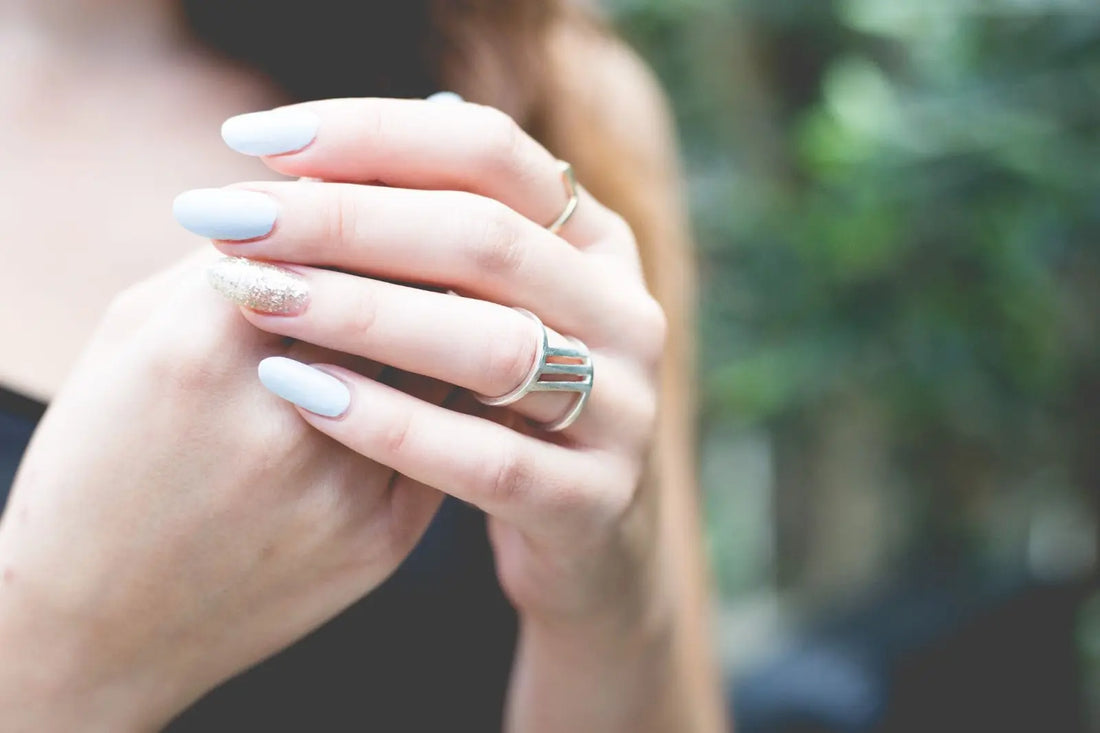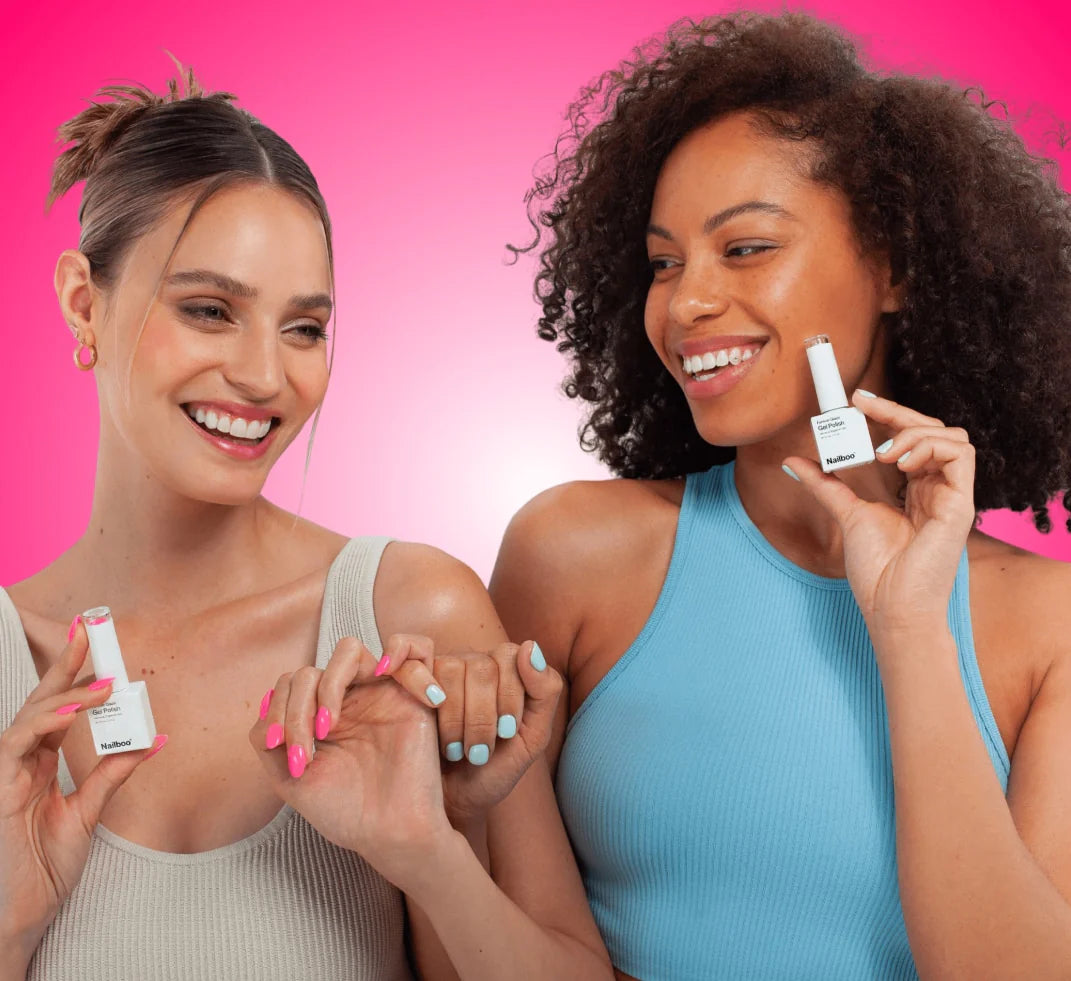Acrylic nails are a method for achieving beautiful, durable nails that really last. Acrylic nails certainly aren’t new—in fact, they’ve been around for decades—but with the rise of nail art as a form of self-expression and creativity, they’re having a resurgence that nail enthusiasts definitely won’t want to miss.
Acrylics have many benefits. Not only are they very durable and long-lasting, which means you can enjoy gorgeous nails without spending too much time at the salon, but there are limitless opportunities to create an acrylic nail design you love. Whether you’re matching the season, the event, or a brand new outfit, there’s an acrylic look for you.
As with all styles of manicure and nail care, acrylic nails do have a few drawbacks that you’ll want to consider. One of them is the removal process. When performed properly, the acrylic nail removal process is no harsher on your nails than any other type of manicure, but if you’re looking to take them off at home, then you’ll want to be extremely intentional and careful.
Nailboo can help you every step of the way. Our work goes beyond delivering on easy-to-use and long-lasting nail dip kits. We’re also nail enthusiasts who want to share all the information and resources we’ve learned about proper nail care, both application and removal. Here’s what you’ll want to keep in mind about acrylic nails and the best salon methods for removing them at home today.
What Are Acrylic Nails?
The history of acrylic nails dates back to the middle of the 20th-century, where they were first developed as a medical tool to replace a broken or damaged nail. Since then, they have evolved into a fashion piece all their own, with unique shapes and styles, as well as the presentation of patterns, designs, and colors to fit every individual.
There are many benefits to using acrylic nails over other methods of nail polish application or even other artificial nails. Acrylic nails are incredibly durable, which means you won’t need to worry about them breaking or suffering damage, even if you work in a labor-heavy industry or your hobby requires you to use your hands a lot. On average, your acrylic nails will last up to two months, as long as you get the occasional fill-in, which means fewer visits to the salon and money saved.
Perhaps most importantly, acrylic nails are an excellent option for anyone looking to express themselves and their style through nail art. They provide a smooth surface for applying colors, decals, stickers, and more, and you can adjust the size and shape to fit your preferred style.
However, acrylics are not without their downsides—they’re expensive, require regular maintenance, and there are just better options out there—like Nailboo’s dip powder kits.
Why Is It Important to Remove Acrylics Properly?
It’s important to remember that they are a type of artificial nail. Acrylic nails are applied to the nailbed with an adhesive, preferably after the nails have undergone proper care and filing. There are several chemical components involved in both the application and removal process. Here are a few of the reasons you’ll want to make sure you’re removing your acrylic nails properly.
They Can Damage the Nailbeds
It can be incredibly tempting to pick at or chip the acrylic as your nail begins to grow out, but try to resist. When the acrylic isn’t removed properly, it can cause lasting damage to your nailbed, like stripping or breakage, which means you’ll have to wait for it to heal until you get your next manicure.
You Need Proper Chemical Care
Even if you do have the right tools for the job, you want to be sure that you’re using them in the right way. When it comes to removing acrylics, you will want to soak your nails in an acetone solution to loosen the adhesive. Acetone can be quite drying to the skin around your nails and lead to irritation like contact dermatitis, so you always want to take proper care when removing your acrylics.
They Can Cause Infections
We use our hands a lot every single day, which means there are many microabrasions and cuts that we’re probably not even aware of. It’s common to experience infections, inflammation, and irritation around the nails and cuticles.
When we chip at our acrylics, it can weaken the nail and its defenses against outside irritations, leading to potential infections. It’s also important to make sure we’re properly sanitizing all of our tools, using the best tools for the job, and not causing any further damage to the skin surrounding the nail during the removal process.
Salon Methods for At-Home Removal
While it’s recommended that you visit a salon for your acrylic removal to ensure that your nails remain happy and healthy, it can be helpful to know the process for safe at-home removal if you’re ever in a pinch. Here are some of the best methods for removing your acrylic nails at home with ease.
With Acetone
The best way to remove your acrylic nails at home is to follow the tried-and-true salon method of soaking them in acetone. It’s important to be patient while soaking because you’ll want to allow the acetone time to loosen the adhesive properly so that the acrylics can come off without damaging your nail underneath.
The process can take about 30-40 minutes, depending on the type of nails you have and how long you’ve been wearing them. You’ll know it’s safe to begin removing the remaining nail when they have become soft from the acetone. Removing a hard nail is what causes damage to the nail below and can lead to breaking or stripped layers.
Once they’re properly loosened, you can carefully remove the nails using a file or a cuticle pusher. If you have a cuticle pusher, you may want to dip your nails back into the acetone as you go to ensure they’re as soft and pliable as possible.
Without Acetone
Sometimes, we don’t have the best tools for the job. In a pinch, properly sanitized metal tweezers can help you to remove your acrylics, as well. While acetone is the most effective and safest way to remove your nails, you do have a few other options if one breaks or if you can’t get to the salon as quickly as you need to.
Warm water can be used to loosen the nails, so it’s easier to remove them without damage. Another option that can help is actually vinegar. While it may take longer and be less effective than acetone, vinegar mixed with lemon juice can loosen the adhesive on the nails and make them easier to remove.
What to Remember When Removing Acrylics
Proper nail and skin care are essential when it comes to removing your acrylic nails. Many people may experience a type of contact dermatitis from submerging their hands in acetone for a long period of time, and if you notice that you’re having a reaction, remove contact right away.
Even if you don’t experience an adverse reaction to the acetone or vinegar, both can be incredibly drying and irritating to the skin, especially the skin around the nails. Make sure you wash your hands, use plenty of soothing lotion and moisturizer, and file and clip your nails carefully, as needed.
Conclusion
There are many ways to achieve a beautiful manicure, depending on your lifestyle and the looks you love. One of them is an acrylic nail application. Acrylics can be long-lasting and very durable, and you have lots of great options for getting the designs you love. They do require a specific kind of care and maintenance, however, especially during the removal process.
While it’s best for your nail health to have your acrylic nails removed by a professional at the salon, you can perform the removal at home, if necessary. Acetone is the most important tool for the job, as it can loosen the adhesive and make it easier to remove the nails, but household compounds like vinegar can be helpful, as well. It’s important to be patient and allow the removal process to work as effectively as possible to protect your nails.
If you’re on the search for a salon-quality manicure option that has a lower impact on the nails, a dip kit might just be the right choice for you. Here at Nailboo, we believe that everyone should have access to beautiful, personalized nails, which is why we offer information on all of your manicure options, from gels to acrylics to shellac, and why we share our easy-to-use and long-lasting dip kits. Get started with your next manicure right from the comfort of home today.
Sources:
The History of Acrylic Nails | Vice
What The Heck Is Acetone, And How Does It Affect Your Nails? | Huffpost


